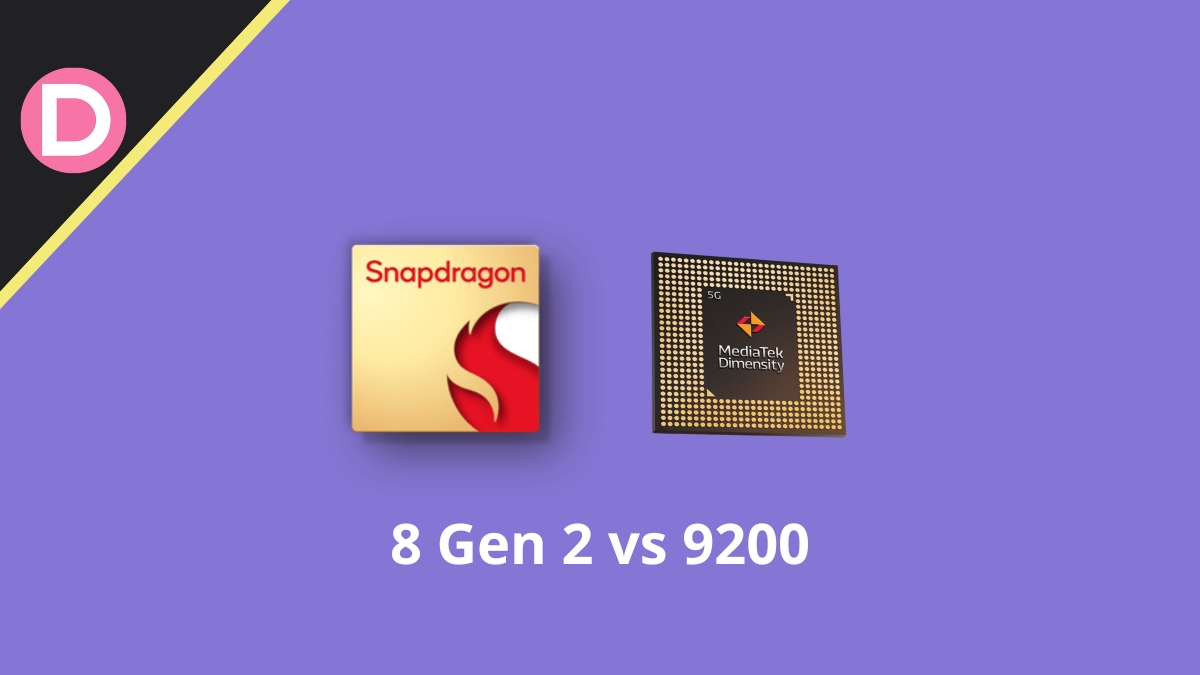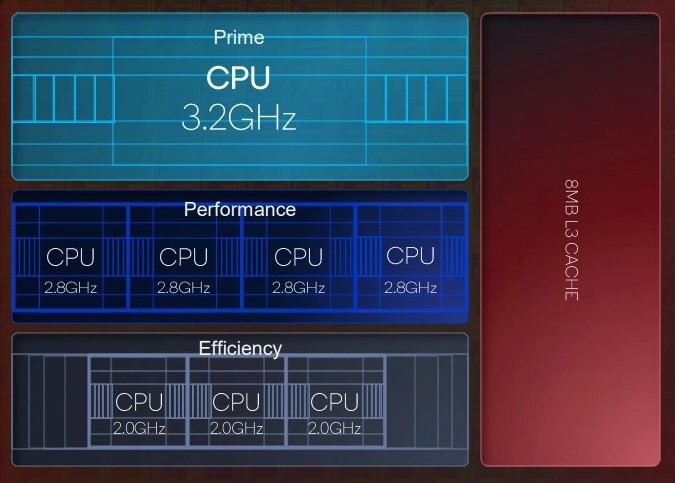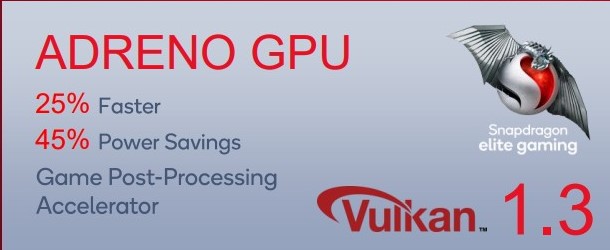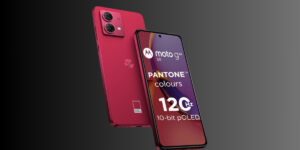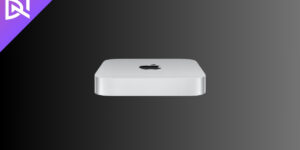The Snapdragon 8 Gen 2, announced on November 16th, 2022, finally looks like a promising SOC for upcoming Android flagships. It had massive efficiency gains, and the GPU got one of the most significant jumps in the past few years.
It now supports Ray Tracing, an advanced way of hyper-realistically rendering light and shadow in a game in real-time. It’s pretty taxing on chips, and even high-end gaming laptops deliver lower frames when using ray tracing. It’s fascinating to see this technology finally make it to smartphones.
Gaming aside, the chip also brought a lot of AI & ML improvements. Sustained performance and power consumption see massive upgrades. The chip now supports spatial audio with head tracking. The 8 Gen 2 packs a significantly better ISP with 8K 60 HDR video recording, and the new Cognitive Engine massively improves overall photo quality.
Mediatek Dimensity 9200: How does it stack up?
They’re both built on TSMC’s tried and tested 4nm fabrication process. Both of the chipsets are 64-bit and have eight cores. However, there are two types of 4nm processing offered by TSMC.
The Dimensity 9200 is based on the N4P process, which is new. Since Qualcomm hasn’t announced which 4nm processing is being used, we have to assume it’s based on the slightly older TSMC 4N design.
The 8 Gen 2 supports a max display resolution of 3840 x 2160, and the Dimensity 9200 only supports up to 2960 x 1440.
The N4P design on paper sees a nearly 6% bump in performance and a 10% improvement in heat dissipation, but we’ll have to wait for some Practical tests to see how well they stack up in real-world usage. Now, let’s individually explore each category and pick an on-paper winner based on theoretical assumptions and inferential reasoning.
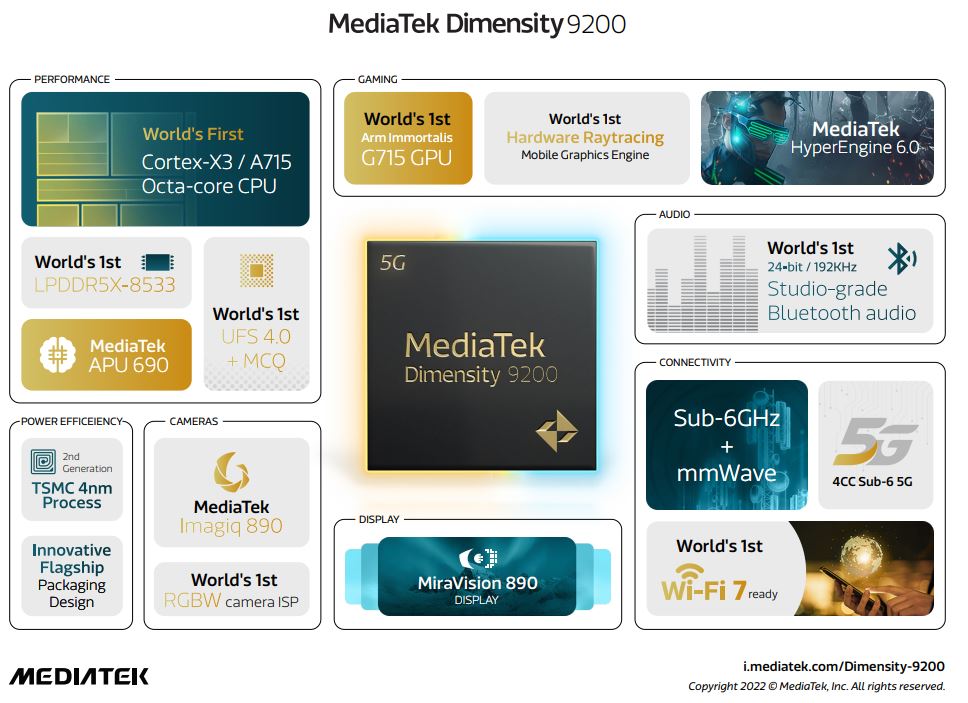
Snapdragon 8 Gen 2 vs Dimensity 9200 Comparison
1: CPU Performance
With the 8 Gen 2, Qualcomm opted for the 1+4+3 arrangement. There’s one prime core (Cortex X3) clocked at 3.19 GHz. It has 4 performance cores (A715 & A710) clocked at 2.8 GHz. Finally, three efficiency cores (A510) are clocked at 2 GHz. It has 1MB of Level 2 Cache and 8MB of Level 3 Cache. Qualcomm has not revealed the system-level cache for the 8 Gen 2. The entire CPU is clocked at 3200 MHz frequency.
The Dimensity 9200, on the other hand, offers a 1+3+4 arrangement, with the Cortex X3 prime core clocked at 3.05 GHz, three performance cores (A 715) clocked at 2.85 GHz, and finally, four efficiency cores (A510) clocked at 1.8 GHz. There’s 8MB of L3 Cache and 6MB of system-level cache. The frequency of this chip is 3050 MHz.
Theoretically, the 8 Gen 2 should score higher in multi-core benchmarks, and the CPU should perform better when multiple cores are involved. However, since it only has three efficiency cores and not four, the power efficiency, in theory, might lag behind Mediatek’s offering.
Qualcomm has mentioned that the three performance cores used have been extensively tuned to make up for the omission of the fourth one, but we cannot be sure until there are practical tests.
The Cortex X3 (Prime core) used on the 8 Gen 2 has a slightly higher clock speed at 3.19 GHz compared to 3.05 GHz on the Dimensity 9200, so there might be a tiny boost to single-core CPU performance.
However, Qualcomm’s chip is probably based on the older TSMC 4N design, so that it might lag behind Mediatek in some aspects of power efficiency. Picking a proper winner is not possible, even on paper.
Winner: Inconclusive.
2: GPU Performance
The Adreno 740 on the Snapdragon 8 Gen 2 is a serious boost from the GPU used on the 8 Gen 1. Ray tracing aside, it is 25% faster and is, according to advertisements, 45% more efficient. The Vulkan 1.3 API is an improvement too. It also has better thermals and a more efficient fabrication that’s better at sustained performance.
The 8 Gen 2 might deliver high and stable frame rates in intensive and demanding games with the highest graphics settings. Games like Genshin Impact, Nimian Legends, etc., will see improvements in stability and quality of graphics.
The Dimensity 8200 is no slouch; the Immortalis G715 GPU also features ray tracing capability, and both chips join Samsung’s Exynos 2200 in this department. In the Manhattan 3.0 benchmark, a 32% improvement is seen in performance. It’s also 41% more power efficient versus the last gen.
You get the same Vulkan 1.3 API, too. It remains to be seen which implementation of hardware-level ray tracing will be better: MediaTek’s or Qualcomm’s. If we analyze the results from the previous iterations, the GPU on the 8 Gen 1 went ahead. It’s impossible to judge the results from this time since it’s pretty early.
One area where Qualcomm takes the lead is developer support. Since more smartphones will use Qualcomm’s 8 Gen 2, developers are incentivized to make and optimize more games for the 8 Gen 2. Optimized games are crucial since they enable high frame rates and ensure game stability.
If enough developers don’t get on board with Mediatek, all that horsepower goes for a toss since nothing can be used to its full potential. And since Qualcomm already has several contracts with Samsung, Vivo, Oppo, OnePlus, Xiaomi, etc., it’s safe to say that developers will prioritize Qualcomm once again.
Qualcomm also uses advanced BVH Tech for their ray tracing. Ultimately, Qualcomm takes the GPU lead for now.
Winner: Snapdragon 8 Gen 2.
3: Benchmark scores
Benchmarks do not always reflect real-life usage. They’re a reliable way to analyze the performance of two chipsets comparatively, but minute differences in benchmark scores do not impact your daily use at all. They’re a reliable way to look at how the general performance of chips fares, though.
The single core score on Geekbench for the 8 Gen 2 is 1483. The Dimensity 9200 scores 1427 on the single-core Geekbench test. This is over 56 points behind Qualcomm.
The multi-core test of the 8 Gen 2 gives an output of 4709, while the multi-core score of the Dimensity 9200 is 4461. So, 8 Gen 2 performs better than Dimensity 9200.
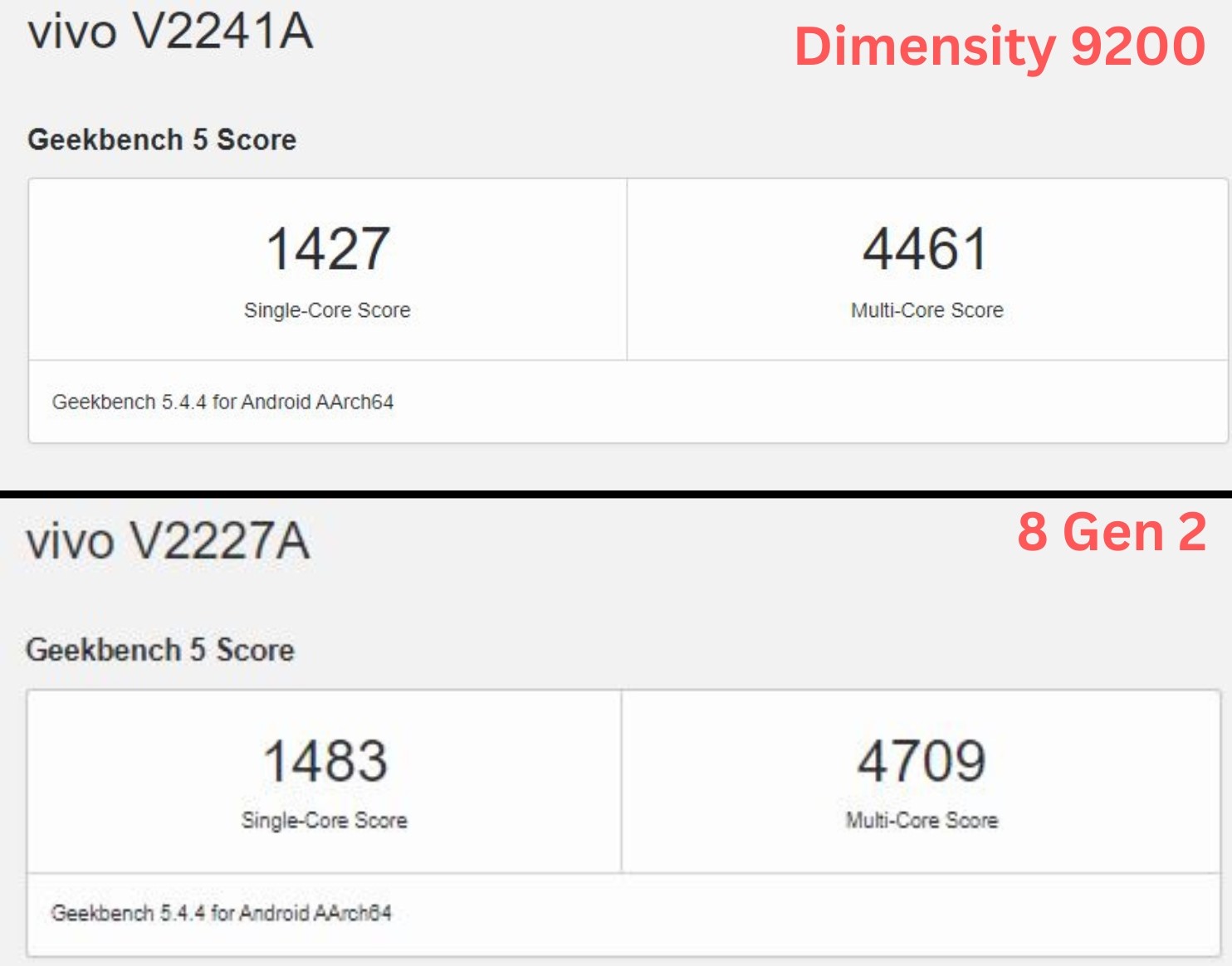
On the popular platform Antutu, the 8 Gen 2 scores an impressive 1.3 Million. Leaked benchmarks show that the Dimensity 9200 hits nearly the same score of about 1.26 Million on Antutu. The difference is relatively small, so it can be attributed to a margin of error, and results may vary after more tests.
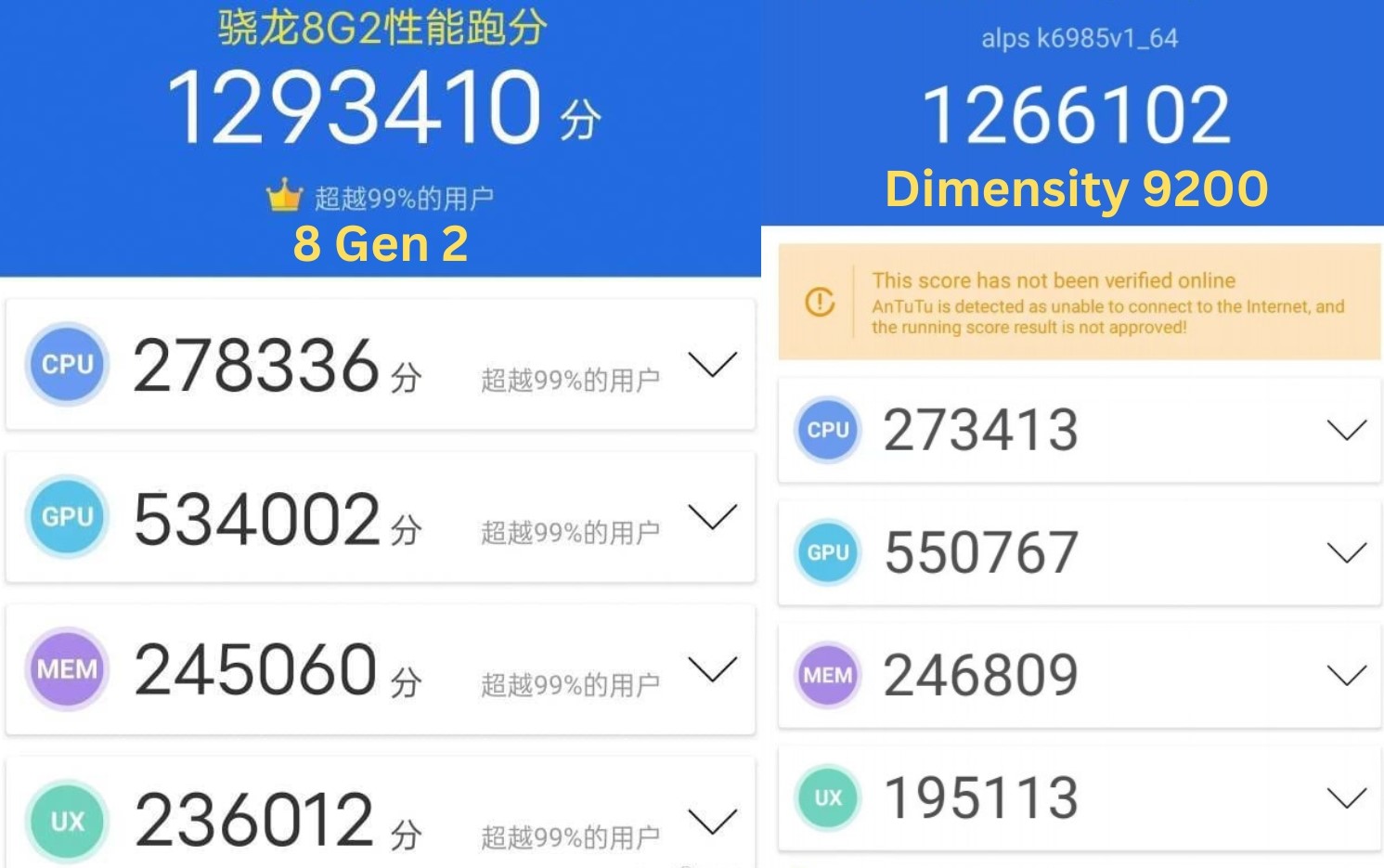
These benchmarks must not be taken conclusively since they vary based on ambient temperature and optimization done by individual brands, cooling systems, etc.
We still don’t have tests of repeated Antutu runs to show sustainability, and we still haven’t seen real-world gaming tests or benchmarks from other popular platforms like 3D Mark or GFX Bench GPU scores.
Winner: Draw.
4: Image Signal Processors
Smartphones these days are all about cameras, and the ISP is responsible for all the processing magic that goes into your photos. Qualcomm has dramatically improved its ISP this year, offering 8K video recording at 60FPS with HDR.
The new Cognitive Engine uses real-time AI to perform semantic segmentation that optimizes skin tone, hair, facial features, textures, etc. In real-time, it can also identify and enhance objects like trees and skies. Overall, the final photo should come out much better.
Qualcomm uses an 18-bit Triple ISP architecture on the 8 Gen 2. It’s capable of shooting up to 200MP photos. It can do up to 108MP with no noticeable shutter lag. It can also capture 3.2 Gigapixels per second.
Mediatek’s chip, on the other hand, is capable of doing a whopping 320 megapixels for a single shot, and it can take 108MP photos with no shutter lag. However, the other features have lagged behind Qualcomm.
It can do AI-based chromatic aberration correction and noise reduction with some software-based resolution enhancement. Still, it does not look like much of a competitor to the Cognitive Engine.
The Dimensity 9200 has AI Dual-Stream Shutter tech that reduces blur in photos. There are also some hardware-based solutions to identify subjects/objects in scenes. It can now do video recording in 8K at 30FPS, a boost from the 24FPS cap last year. However, there’s no word on HDR, and it cannot shoot 8K at 60 FPS.
Qualcomm has other tricks up its sleeve like Hybrid Autofocus, 64MP + 36MP & Triple 64MP shots with no shutter lag, 10 Bit HEIF image capturing, etc., making it the clear winner in this category.
Winner: Snapdragon 8 Gen 2.
5: Battery life and efficiency
Mediatek’s Dimensity 9200 is based on a newer 4nm node, and Qualcomm didn’t announce which 4nm node their chip is based on, so it might be the case that the Dimensity 9200 is more efficient when compared to the 8 Gen 2.
The 9200 also has one extra lower-clocked performance core, 1.8 GHz versus 2 GHz, so that it might beat out the 8 Gen 2. But battery efficiency depends on many categories, and it’s primarily the responsibility of companies.
Last time, Mediatek edged it out in the efficiency department since it was based on TSMC’s processing, but since Qualcomm is using TSMC this time, the playing field is even.
Winner: Inconclusive.
6: Artificial Intelligence & Machine Learning
Qualcomm’s mixed-precision AI has a faster Hexagon processor (4.35X faster than the 8 Gen 1) and can deliver 60% better performance per watt. This will, according to adverts, enable it to do multi-language translation and natural language processing faster.
The 8 Gen 2 also has a dedicated power delivery system for the AI cores. AI also aids the ISP by helping with the Cognitive Engine.
The Dimensity 9200, on the other hand, has 18% faster clock speeds, 25-45% better power efficiency, and INT4 support. APU 690 is the sixth generation APU for Mediatek.
Winner: Snapdragon 8 Gen 2.
7: Connectivity
Both chips support the Wi-Fi 7 standard; both have LPDDR5X RAM & UFS 4 compatibility and Bluetooth 5.3. Both support AV1 decoding.
Qualcomm only supports dual Active 5G and can do Spatial Audio with head tracking. 48 kHz lossless music (with the aptX Lossless Codec) can be streamed with latencies as low as 48 milliseconds.
The Dimensity 9200 brings mmWave support for the first time, and games can run at 144Hz at 1440P resolution, which matches Qualcomm.
Winner: Snapdragon 8 Gen 2.
Which one is Better?
There are too many factors left to pick a conclusive winner since there aren’t any commercial devices with these two chips that are out for global purchase. However, considering that Qualcomm, on paper, has the better ISP, better AI & connectivity, and developers will prioritize it since it’ll be featured in more smartphones, it’s safe to declare the 8 Gen 2 as the theoretical winner.
While we wait for practical comparisons and some real-life analysis, let’s not forget that both of these are excellent high-end SOCs that are more than capable of taking great photos and performing your daily tasks with ease while playing games with excellent frame rates and graphics.
Theoretical winner: Snapdragon 8 Gen 2.
